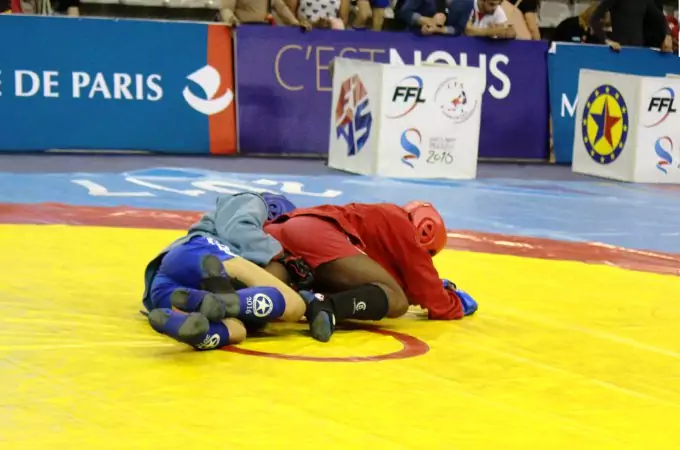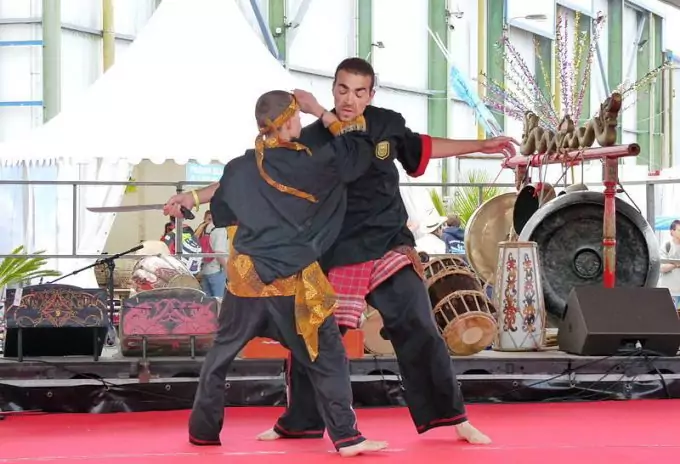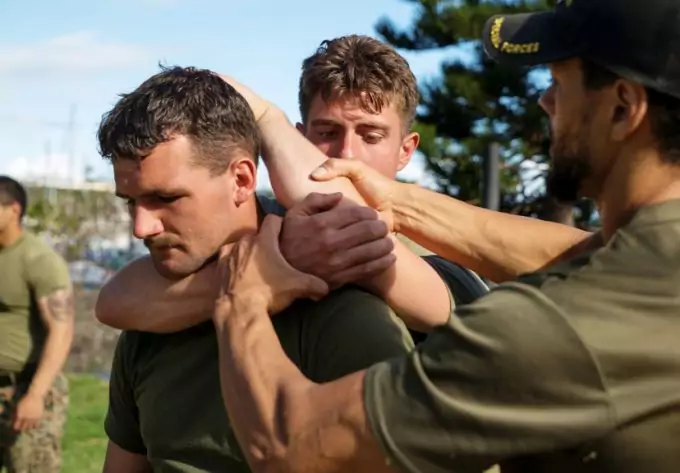Despite there being a big difference between professional martial arts and street fighting, there are some martial arts styles that will teach you the self-defense you need that can be applied to the everyday fight.
[the_ad_placement id=”in-text-1-type-r”]The best martial arts for street fighting don’t cover a broad spectrum that can be filled with any martial art on hand. Don’t be fooled by all those martial arts movies where you have to be black belt in taekwondo in order to defend yourself. That’s more of a martial art that is focused on discipline and katas rather than really learning how to fight in an unpredictable situation.f
See also: Self Defense Tips for Women: Tricks And Techniques for Effective Self Defense
If you’re interested in getting involved in a self-defense course, then these are some of the best martial arts for street fighting that you should consider signing up for. These martial arts have been chosen on the basis of the speed and simplicity of the arts themselves, and the effectiveness of the techniques in a fight.
Kali or Eskrima
This style originates from the Philippines, and was developed by the traders who live there in order to protect themselves. Because they were created by the common, uneducated man, there was no way of recording these methods during their initial creation.
The style was primarily used between the tribes that lived in the Philippines, but the more modern version has been influenced by the Spanish form of fencing in the 15th Century. It has also been influenced by silat, which came from other Malaysian countries. The style focuses on sticks and knives, and it can be improvised with other objects that you may find in your vicinity when you’re on the streets.
The methods teach how to effectively use any kind of stick or rod-type weapon to defend yourself as well as attack effectively. And even if you can’t find a weapon close at hand, the same principles can be applied to unarmed fighting, since the knife or stick is simply an extension of the arm.
The Philippines have been a primarily bladed culture, as they use large bladed knives in their everyday lives. This has helped the martial art to continue to this day. Some modification had to be made to it when they were colonized by the Spanish, as they prohibited civilians from carrying full-sized swords.
They replaced their swords with sticks made out of rattan and kept the practice alive so that they could continue to defend themselves. The art is usually passed down through family members and training in informal sessions, making it difficult to trace back the style to any origin point.
The style explained through videos:
This is a video of Atillo Balintawak, Grandmaster of Eskrima, demonstrating the technique:
Here is another video demonstrating the speed of two Eskrima masters as they test each other in an impromptu duel:
This video provides the basic techniques of the art to give you an idea on what exactly is involved:
https://www.youtube.com/watch?v=e2l3jsr6ZOE
Above are a few videos that will help you understand the style better.
Combat Sambo
Despite the name, this is actually a Russian martial art that is primarily focused on grappling. In the event that you are unarmed and need to subdue your opponent, grappling can provide you with the best means of ending the fight quickly and painlessly. There are three different forms of Sambo to choose from, each with its own unique spin:
- Sport Sambo: this is used only in competition fighting
- Self-defense Sambo: use to inflict as minimum damage as possible to the attacker
- Combat Sambo: this is a form of military fighting that is used to inflict as much damage as possible on the assailant
Combat Sambo is considered to be the most effective in a street fight, as the techniques are used in real military situations where soldiers’ lives are threatened. Since it is a grappling art at its heart, it’s important that you train your reflexes you respond quickly to life-threatening situations, as well as practicing the methods on a regular basis. Any slip up in your attempt could result in your death, so careful study with a trained teacher is definitely the key.

Sambo actually stands for SAMozashchita Bez Oruzhiya, which means “self-defense without weapons,” and was developed back in the 1920s by two men with very different fighting styles. Vasili Oshchepkov and Viktor Spiridonov had both developed different arts that combined many styles from around the world that eventually cross-pollinated into what is called the modern day Sambo.
Oschepkov had first learned Judo in Japan, while Spiridonov had backgrounds in Greco-Roman wrestling, freestyle wrestling, and many Slavic wrestling styles. They combined their efforts together in order to improve upon the Red Army’s hand to hand combat so that they could better defend themselves against their enemies.
The style explained through videos:
Here is a video of just some of the techniques one can learn in a session of Combat Sambo:
And some grappling methods that are demonstrated that make up a part of Combat Sambo.
This video demonstrates the philosophies behind the techniques used in the martial art:
https://www.youtube.com/watch?v=e4pPVT_4ZjY
Check all three video if you are interested in this martial art.
Pencak Silat
Pencak Silat is an Indonesian style of martial arts that were originally developed to combat the Dutch. As the Dutch enslaved the people there and brought over more Chinese to complete the labor, the local population decided to fight back using these techniques. They were a form of Robin Hood types, who would use their methods to rob from the rich and return the money to the poor so that they could sustain a way of life.
[the_ad_placement id=”in-text-2-type-r”]It involves the full body, and it involves strikes, grappling, throwing, and the use of some weapons. What makes this style of martial arts daunting is that there are over 150 styles to choose from, and finding the right one can take some time as well as diminish the effectiveness of your self-defense. The different styles are mostly based on the regions they originated from.

Some of the most common styles are Minangkabau, Sunda, Betawi, Java, Bail, and Maluku. They each differ from each other based on what each style focuses on. Some may focus on weapons, while others prefer to use grappling or strikes, so this makes it difficult to generalize about the martial art altogether.
What they do have in common are the basic steps that are combined with body posture and movement in order to defend oneself and strike when needed. These are the very first steps that any student will learn. It is one of the reasons why it’s listed as one of the best martial arts for street fighting because the level of difficulty in learning the basics is quite low.
The style explained through videos:
Here is a demonstration of Pencak Silat in a sports competition demonstration and some of the various styles that are taught by different masters:
This video shows the different jurus that are used in attack and defense:
Check out all above videos.
Commando Krav Maga
Krav Maga was originally developed to teach people self-defense in real life situations. It was originally developed by Moni Aizik using Judo as a basis, and provides defense against knives and guns in situations that can take place on the street. However, Commando Krav Maga is much different, and there are no similarities between the two.

The style was developed by Imi Lichtenfield, and is more similar to Combat Sambo, as they are both influenced by Jiu Jitsu. It is a bit more difficult to learn, as it is a grappling art, and more practice is required in order to master the techniques perfectly and make them effective in real life situations.
There are some strikes involved that can be used to disable an opponent that are based in Muay Thai strikes, so they’re fast and hard, but that isn’t the primary focus of Commando Krav Maga. It’s also one of the newer styles that were developed recently, so there’s not a lot of history behind it.
The style explained through videos:
This video demonstrates some techniques that can be used to disarm your opponent:
Here is a video of a Commando Krav Maga class, so you can have an idea of what to expect if you decide to sign up for a class:
Tips from professional trainers in the videos above.
Krav Maga
This has a much more historical basis, and was developed for the Israeli Defense Force by Imi Lichtenfield when the state of Israel was formed. He originally taught Jews living in Czechoslovakia to defend themselves when anti-Semitic riots began.
The basis of the martial art focuses on avoiding confrontation. When this is impossible, then one’s efforts should focus on ending the fight as quickly as possible. Offensive strategies focus on targeting the vulnerable areas of the body, and many of the strikes can lead to permanent injury and even death. The training course is approximately five weeks long, and focuses on the primary ideas:
- preemptive attacks or counterattacking as soon as possible
- targeting the vulnerable areas of the body, including the eyes, throat, face, solar plexus, knee, et cetera
- neutralizing the opponent as quickly as possible
- awareness of one’s surroundings in order to best defend oneself or provide advantages for attack
Krav Maga’s gun defense techniques are easy to learn and even easier to master, and applied effectively, can definitely turn a fight in your favor. In fact, the entire basis of Krav Maga is so easy to learn that one can be self-taught through a book or DVD. This is beneficial for those who can’t afford going to classes, which can end up being very expensive. This is because the martial art utilizes the natural reactions of the body to dangerous situations, and shows you how to use them for your benefit.
The style explained through videos:
This video shows just a small snippet of some of the Krav Maga techniques you’ll learn:
Krav Maga teaches fast reaction times in order to defend yourself if there are multiple enemies present:
https://www.youtube.com/watch?v=tlXxVPt7rrQ
This video is the first of five in showing the primary pressure points that people should aim for when learning Krav Maga:
Many useful tips in the above videos.
Other martial arts
Because there are so many types of martial arts styles to choose from, there are many more that you can become interested in order to help you protect yourself.
- Dirty boxing: also known as suntukan, it is another martial art originating from the Philippines. The name alone conveys that there are no set rules to the style, and is “dirty” in every sense of the word. Any part of the body can be used, and even limb destruction is involved in the techniques. Though it mostly focuses on hand to hand combat, it incorporates many techniques that involve being armed in order to defend yourself. In modern day MMA, it is also known as clinch fighting. These are just some of the basics involved in dirty boxing.
- Muay Thai teaches people to use eight important points of contact and apply them as weapons. These eight points are the hands, forearms, shins, elbows, legs, knees, and the body to maintain them all. It’s a full contact martial art that requires the conditioning of the body in order to take hits without being knocked down. It can require a lot of patience and punishment in developing one’s muay thai skills, but the lessons learned will definitely help to keep you safe in a fight. This video shows how the “eight weapons” are used in Muay Thai
- Gracie Jiu Jitsu also known as Brazilian Jiu Jitsu, this style was developed by the Gracie family, which has long been successful in many martial arts sporting competitions. They’ve developed their own style that is being taught around the world. Here’s a video that shows the basics, from a member of the Gracie family himself,
Video for dirty boxing:
https://www.youtube.com/watch?v=pChX6Lym6DU
Video link for Muay Thai:
And video for Gracie Jiu Jitsu:
If you’d like to see a video on some of the top used martial arts used in street fighting.
[the_ad_placement id=”in-text-3-type-r”]Then fightTIPS also has useful videos that can help you choose a style that’s right for you, outside of the ones that have been listed above:
No matter which martial arts style you choose for yourself, it’s important that you never neglect training. The body is a wonderful thing that should be trained and tuned on a regular basis in order to be prepared to face such situations. The effort that you put in will repay you a thousand fold in results when you’re randomly attacked on the street. To be more responsible for your safety, take a look at some more self-defense techniques in our earlier article.
On the other hand, being lazy and allowing your muscles to wither away, will make it more difficult for you to defend yourself properly, as you struggle to remember what the right moves are. Through practice, the techniques become instinct that you’ll never have to think about them in a fight. Mental and physical preparedness are the key tools in any kind of self-defense, and you won’t get that by sitting on your butt and watching television.
For more tips on how to survive on your own using martial arts techniques, see our article on this topic to find out.






If I had to pick I would without doubt chose Krav Maga, because it is made for ending a fight as fast as possible. And in a street fight that is exactly what you need.
Train, practice, and never quit.
Whatever martial art you choose to train in, it’ll not help you in a street fight unless you use it every day. Street fights tend to get out of control quickly. The best defense is to end it before it even starts. Kicking someone’s ass requires much effort, that’s why I prepare for multiple attackers.
I find Krav Maga to be modern, usable and fairly easy to train. It may lack the complexity and the entire lore behind it, but it is practical and well thought out to be as efficient as possible.
Thank you Stephanie for sharing your opinion with us.
What strategy should be adopted when it comes to fighting multiple enemies? In a situation like this every second of exposure to a multiple-enemies is much more dangerous than a single-opponent situation. Searching for a chance to quickly take down an opponent is worth a greater risk. Another important thing to keep in mind if you find yourself in this situation is to position yourself so they’ve got to come at you one at a time, an example would be to take the higher ground.
Martial art is more than just a self-defense skill. It is the ultimate combination of a total body workout and a self development program, which can keep you healthy and well-prepared for attackers. As to how many attackers you can fight, depends entirely on your training and experience.